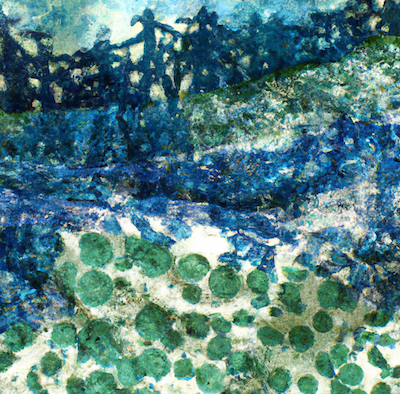
With radiometric dating, it is possible to measure the radioactive decay of isotopes and determine the age of everything from fabric scraps to artworks to wooly mammoths and trees. This ability to put a precise age to objects evokes an interesting relationship between the very small and the way it can be used to reveal or give away the secrets of the sometimes very large—a sort of invisible agent that bears witness to a life or event, an object or era and continues to report its story long after the context, the individuals involved, the specific conditions that gave rise to it have ceased to exist. These tiny stenographers as it were, without any of the motives or machinations of the human historian, are probably the closest we can come to something approximating the truth about the past, and that they have continued to speak this truth after so long confuses our sense of time and meaning—that a human lifespan has any real substance or value when something much older not only existed but evidence of its existence is still present, alive, fresh, as though it were just here yesterday.
This knowledge of the remote past in a way has replaced more ancient human beliefs in the mystical or animistic, leading one to question whether the scientific dating of objects and events takes away some of the wonder or mystery about life and our existence as human beings, the sense that one’s presence is somehow special, which we seem to have when we are very young. This is not a new idea, of course. Max Weber among others spoke of the “disenchantment of the world” that accompanied the Enlightenment and how humans chose to trade away wonder for reason. What does the dating of the Turin shroud provide to the one who very much wants, needs even, to believe in Christ to make his or her life worth living? How does knowing about the forgery of a great painting help us appreciate the artistry that went into its creation and the message the art itself has to convey? Does not the dating of the wooly mammoth bring more into focus its mortality, where and why it died, rather than its power, vitality and strength—things that once might have situated man as merely one among many different forces at play on this planet? It seems this sense of not knowing, and being content with not knowing, can bring a sense of perspective and comfort, give rise to fables, myths, and creative thought in a way that science and rationality simply cannot. We no longer live in that world of uncertainty and magic, probably for the best, but one has to wonder what the pre-scientific mindscape might have looked like, how reason has changed our view of ourselves now that we can seemingly know more than our forebears could have ever imagined.